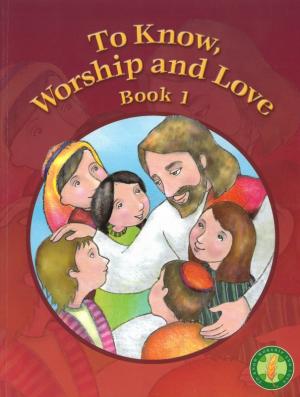To Know, Worship and Love: Book 1
9780975671412
Book
$69.99
In stock
Continuing the methods and emphasis of the Catechesis of the Good Shepherd, established in Prep/Kindergarten, chapter 1, God's Book, The Bible presents the Scriptures as God's stories for us. In chapter 2, Together at Mass children are led into the liturgy. This would need to accompany the actual celebration of Mass for the children or their participation in Sunday Mass.
The Seasons of Lent and Easter run through chapters 4 to 9, filling out in more detail what was presented basically in the first book. So the young child is gradually led into the wonder and reality of the Paschal Mystery.
In chapter 10. Jesus the Good Shepherd is presented relating to the children he loves, the children who experience his catechesis. This leads into the Sacrament of Baptism. In this book there is a specific emphasis on Baptism, centred around Chapter 11, rather than on the Eucharist. If children learn to relate personally to Jesus Christ, so they should learn how to relate to his Blessed Mother, hence Chapter 12, Mary Our Mother. Marian themes are found at all levels of To Know, Worship and Love.
Chapters 13 to 15 develop some of the key “Parables of the Kingdom”. The concrete fabric and message of Christ's parables is a major part of the Catechesis of the Good Shepherd. But the theme of creation is introduced once more in chapter 17, In the Beginning. Chapter 18 on forgiveness is remote preparation for the Sacrament of Penance and Reconciliation. Gratitude is emphasised in Only One Said Thank You, chapter 19. The miracle of the Feeding of the Five Thousand is the theme of chapter 20. Miracles are an important way of forming sound Christology in the early years.
St Matthew's approach to the Birth of Christ is found in the final chapter, Jesus is Born. In the Northern Hemisphere this chapter would be used early in the school year.
Each Chapter begins with a story taken from Scripture or life. This is followed by I Wonder, a key component in the Good Shepherd experience. “Wonder questions” do not require a final reply (closure) but invite the child to wonder at the mystery of God among us in Christ. They draw on the spiritual awareness of the baptised child, on his or her religious imagination and capacity to explore. A Home Activity links the domestic church to learning at school or in a CCD group so that parents may truly be the “first educators” in faith. Prayer is the response of the children as they develop a personal faith relationship with Jesus the Good Shepherd.
Scripture references to be read to the children are provided on pp, 160-172
Our Prayers, pp. 173-174, provide basic Catholic prayers the child learns by heart.
Bishop Peter Elliott, General Editor
